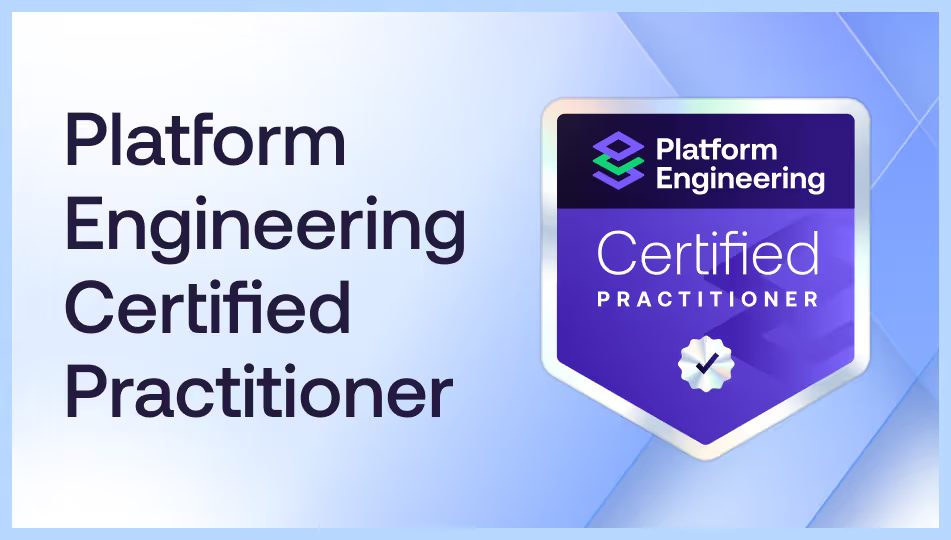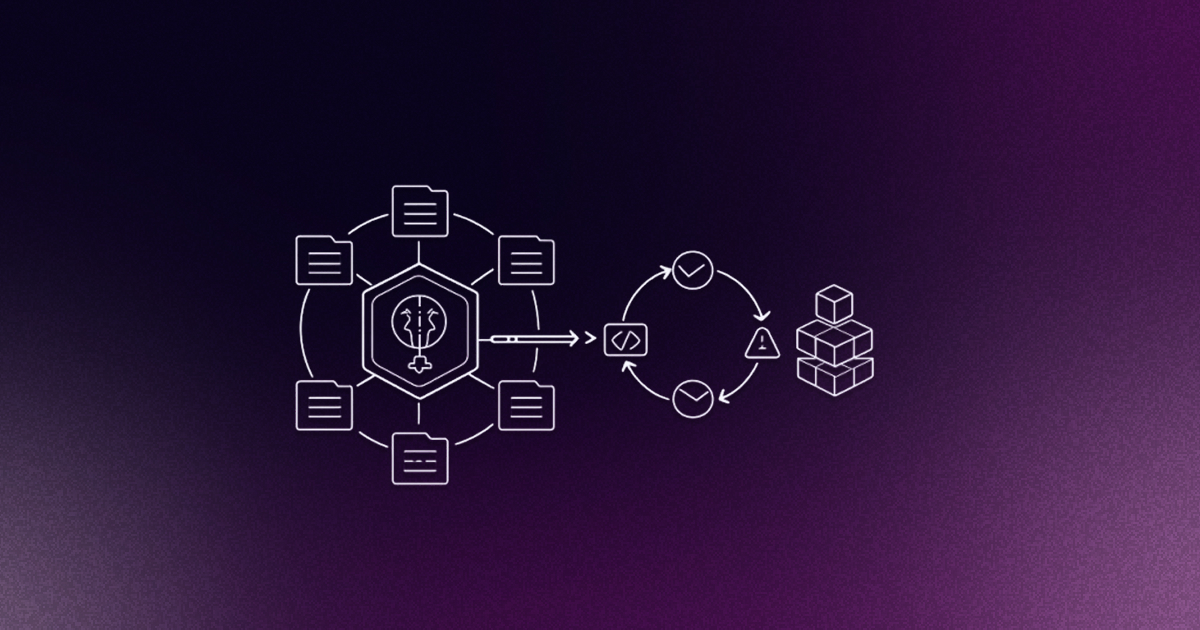If you're anything like me, you're constantly buzzing with ideas about how AI can revolutionize everything. I’ve spent a long time in the healthcare industry, so I think about everything from predictive analytics and personalized treatment plans that transform patient care, to AI assistants that read real-time biometric data and give nutritional advice. We’re at an incredible inflection point where AI is not just eating software, it's eating the world, and we're the ones building the future. However, as we push the boundaries of what's possible with AI, we often encounter deployment complexities, compliance hurdles, and the significant challenge of reliably integrating our brilliant models at scale into production.
This is where platform engineering steps in, not as a roadblock, but as your most essential ally. My thesis is simple: while AI offers transformative potential, its actual impact for developers hinges on robust, well-engineered platforms. Without them, we risk getting bogged down in infrastructure minutiae, losing the battle for efficient delivery, and ultimately failing to unlock the full potential of these technologies for the wider world.
The AI developer's dilemma: Navigating complexity
We’re under immense pressure to deliver features accurately and in a compliant manner, especially in regulated environments like healthcare, where scrutiny is intense. If our internal teams cannot provide the platform features we need, we'll be looking for alternative tools or workarounds - and who can blame us? This DIY tendency can lead to fragmented, inefficient systems and increased cognitive load, ironically, the very things platform engineering aims to reduce. It is somewhat ironic that teams in companies in regulated industries resort to DIY, but I frequently observe this trend.
Moreover, the rise of AI-generated code, whether we like it or not, is a reality. Tools like GitHub Copilot, Roo, Canva, and other AI IDEs are accelerating code creation. Still, this code often originates from open-source and third-party libraries, making it challenging to implement a secure supply chain. New, AI-specific vulnerabilities like LLM poisoning and hallucinations are also emerging. As platform engineers, we need to be prepared for this new normal, making our platforms "AI-generated code ready" and ensuring guardrails are in place before code is even generated.
Patrick Debois emphasizes that any generative AI initiative truly deserves a dedicated platform team. He views the AI engineer as the change agent who brings AI to production, and the platform pattern as fostering collaboration, enabling, and governance across teams. For him, the platform's job is to manage the sprawling toolset that emerges around AI, including large language models (LLMs), vector databases, Retrieval Augmented Generation (RAG) as a service, agents as a service, and execution sandboxes for agents. These are critical components that allow us to provide common API access to models, manageability, and control, treating AI models just like any other middleware service.
Platforms for AI: Powering innovation in healthcare
Our core mission as platform engineers is to support the business, and that means getting AI models into production quickly and enabling inference at scale. This is particularly evident in regulated industries, such as healthcare, where AI is driving breakthroughs from predictive analytics to personalized treatment plans. Imagine a health insurance organization attempting to implement AI for streamlining prior authorization requests. This isn't just about building out one use case; it's about building out multiple use cases on a platform that drives reuse. The real magic of platform engineering in healthcare lies in creating a comprehensive framework that can handle any digital asset, whether it's fresh code, an existing system in need of an upgrade, or even an off-the-shelf product. So, what are some of the foundational elements that any platform must include in healthcare?
- Compliance and security built-In, not bolted on: Healthcare faces incredibly stringent regulations, such as HIPAA. A well-designed platform ensures that security, transparency, and auditability are embedded into every workflow and digital asset from day one. This means that whether you're developing new greenfield AI models or modifying existing brownfield applications, the platform automatically applies necessary controls, such as those needed for secure access, encryption, vulnerability management processes, and audit logging. This proactive approach helps reduce risk and makes it easier to meet regulatory requirements without sacrificing agility.
- Golden paths for consistency and speed: Platform engineering provides "golden paths": opinionated, predefined workflows that simplify the most common development and deployment tasks. For complex, multi-system operations like prior authorization that often involve utilization management systems, help desk systems, claims, patient records, etc., the golden path idea becomes particularly poignant. How do you improve, let alone optimize, such a system? Start by adopting common approaches and systems (the platform) for making changes. Start small and grow over time. Minor incremental improvements will eventually eat up the old process.
- For greenfield development (traditional and AI): These paths provide a fast, secure, and compliant way to build and deploy new applications or AI models from scratch. They include automated CI/CD pipelines, integrated security scanning, and built-in observability. This significantly accelerates time-to-market for innovations.
- For brownfield (modifying old code, refactoring): While golden paths are often thought of as a new project approach, they can be adapted or extended to guide the refactoring and modernization of existing applications. The platform's consistent environments and automated processes ensure that changes to old code are deployed reliably and securely, even if they're not a full "rip-and-replace". This helps manage the cognitive load on developers by providing clear, supported ways to evolve legacy systems.
- AI within the platform: Turbocharging development: AI isn't just the product; it's also a tool that platform engineers can use to enhance the platform itself, benefiting all types of digital assets. AI can not only help with code, but can act as a “healthcare security advisor” and inform the developer when a particular system change has implications beyond the change itself.
- Automated code generation and refactoring: AI-assisted tools can embed large language models (LLMs) directly into Integrated Development Environments (IDEs), offering real-time feedback, automated refactoring suggestions, and accelerating code creation for both greenfield and brownfield efforts.
- Enhanced security and compliance: AI can be leveraged for proactive security by enabling agentic AI to detect and prevent vulnerabilities, like hardcoded secrets, as code is being written or generated (even by other AIs). This ensures "AI-generated code ready" platforms with guardrails in place. This is one place where an “adversarial agent” pattern can be used. One agent generates the code, and another checks the output to make sure it falls within guidelines. The second agent can even adjust the prompt from the first agent so it gets more accurate.
- Intelligent automation and observability: AI can automate infrastructure management, optimize performance, and transform observability from reactive troubleshooting to proactive anomaly detection and prediction. An AI agent can monitor logs, analyze failure signatures, and even propose or trigger autonomous rollbacks, reducing mean time to recovery (MTTR).
- Managing any digital asset: Beyond code to configuration and COTS: Perhaps the most significant technical and operational challenge I see in healthcare is in how most companies have siloed infrastructure configuration, COTS modification and management, and APIs. They are often using completely different management tools and have no operational integration or “awareness” of each other. This misses a huge opportunity for driving toil out of the management process, closing security gaps, and preparing for version changes from vendors and streamlining migration to the cloud.
- Configuration parameters & Infrastructure as Code (IaC): Platforms provide standardized ways to manage configurations as code, ensuring consistency across environments and enabling full traceability. This is crucial for controlling how both new and old applications behave.
- Off-the-shelf applications (COTS): Even for COTS applications, a platform helps by providing pre-built architectural patterns and designs that can consume and integrate with these systems while enforcing consistent security and compliance. This prevents "reinventing the wheel" for everyday needs and ensures that COTS solutions operate within the organization's defined standards. The platform provides an abstraction layer over these diverse tools and systems, offering a unified, dev-friendly interface.
- APIs and internal Context: Platforms enable the controlled exposure of internal context - such as source code, databases, and existing APIs, using standards like Model Context Protocol (MCP) servers. This can effectively create an "internal developer portal for agents," enabling AI agents to interact with and manage these diverse digital assets securely and deterministically. A new CMS rule mandates FHIR-based Prior Authorization APIs, and platforms with FHIR connectors are crucial for streamlining workflows and enabling AI agents to interact securely and efficiently with diverse healthcare data sources, thereby addressing the challenge of siloed information.
As Kelsey Hightower often points out, platform engineering is about "filling the gap" between what is readily available (such as open-source frameworks) and what your organization truly needs. For AI developers, this means the platform provides the essential "something you add" to make AI useful and production-ready for the enterprise. This includes concepts like AI application development platforms that streamline the delivery of generative AI by integrating crucial building blocks, such as AI routers, LLM observability, grounding, and guard-railing, rather than having teams build these from scratch.
The human element: Culture and product mindset
Ultimately, the success of a platform for AI developers, or any platform, hinges on people and culture. We need to treat our platform as a product, and the developers, as well as the business stakeholders, as its customers. This means:
- Understanding developer pain points: Don't build in isolation. Instead, engage directly with developers, conduct user interviews, and gather feedback to understand their challenges and ensure the platform solves real, current problems. As the saying goes, "perfection is the enemy of product"; focus on solving high-value, frequently requested issues first.
- Fostering trust and collaboration: Building trust is paramount. Platform engineering is a "multiplayer game" where different groups, including operations and security, contribute. We need to collaborate on solutions that genuinely reduce cognitive load and simplify tasks, rather than just shifting work to developers. Encourage developers to contribute to the platform itself, making it a project with an open-source-like approach and shared ownership.
- Clear communication and branding: Even if it feels repetitive, narrate everything the platform team is doing and focus on outcomes, not just effort. Highlight how the platform reduces integration costs, speeds up delivery of the right product of excellent quality the first time, and improves reliability with clear metrics. This consistent communication and branding build advocacy and ensure the platform's value is understood across the organization.
The path forward
The future of AI is bright, and platform engineering is the bedrock upon which its full potential will be realized across enterprises. We've seen how platforms are becoming essential for building and delivering AI-infused applications, and how AI itself is transforming the way we build and manage these platforms. From managing complex data in healthcare to automating security and refactoring code, platforms provide the consistent, secure, and scalable foundation that AI development demands.
So, what are you waiting for? It's time to embrace platform engineering as a core part of your AI development strategy. Start by identifying the most significant pain points in your current AI development and deployment workflows. Engage with your platform teams (or start building one!) to create golden paths that simplify AI model delivery from ideation to production. Explore how AI can be integrated into your development toolchain to automate routine tasks and enhance productivity. The shift to an AI-native world is underway, and by focusing on robust platforms, we can ensure that our organizations not only participate but also lead the charge.












